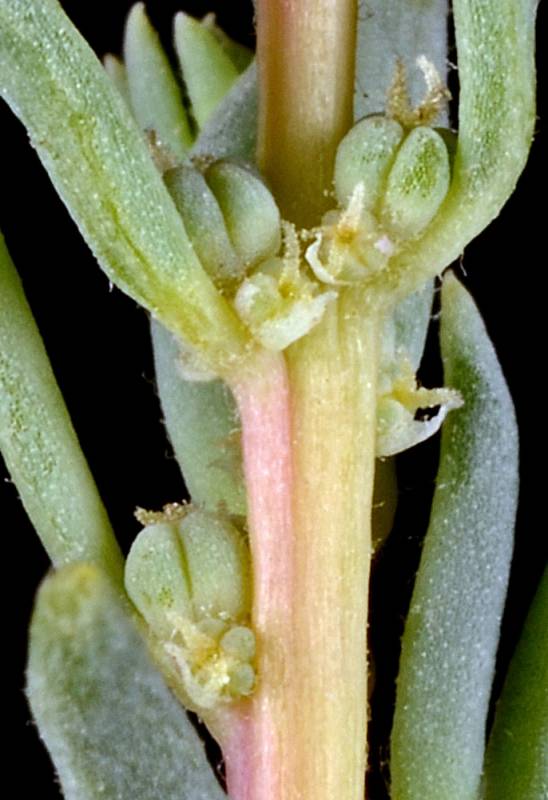Hosted by the University of Washington Herbarium, Burke Museum
Publication: Contr. Gray Herb. 56: 50. 1918.
Origin: Native
Herbarium search: CPNWH
Notes: FNA4: "Suaeda nigra is the correct name for the species previously known as Suaeda moquinii. The type specimen was collected in 1820 by Edwin James along the Canadian River in the Texas panhandle. J. Torrey (1827) tentatively identified it as "Chenopodium maritimum L. ?". Rafinesque named it Chenopodium nigrum, long before Torrey\\'s publication of the name Chenopodina moquinii in 1856. C. O. Hopkins and W. H. Blackwell (1977) suggested that the name Chenopodium nigrum was both a nomen nudum and a superfluous name. But the publication of that name included a clear reference to Torrey\\'s 1832 publication, which means that the name was not a nomen nudum, and the specimen belonged to a new species, which means that the name was not superfluous. "Suaeda fruticosa" with the incorrect author combination (Linnaeus) Forsskål has been misapplied to this species (H. J. Schenk and W. R. Ferren Jr. 2001).
Suaeda nigra exhibits much phenotypic plasticity, as well as genetic variability, and is wide ranging. This combination has resulted in the naming of many variants that often reflect a response to localized or regional habitat conditions such as degree of wetness, salinity, or freezing temperatures (C. O. Hopkins and W. H. Blackwell 1977). In California and adjacent states, for example, glabrous plants (S. torreyana var. torreyana) and pubescent plants (S. torreyana var. ramosissima) occur throughout the distribution of the species. In California it is coastal but not estuarine in the San Francisco Bay area and in Orange and San Diego counties. Plants of northern latitudes or higher elevations that are prone to freezing tend to have annual stems from a woody base. Plants that occur in more southern or milder conditions are usually shrubs with perennial stems. Plants in seasonally flooded wetlands tend to be facultative annuals.
In the western and northern part of the range, most plants of Suaeda nigra are glabrous or sparsely pubescent and more or less long leaved."
References:
Last updated 10/23/2023 by David Giblin.

